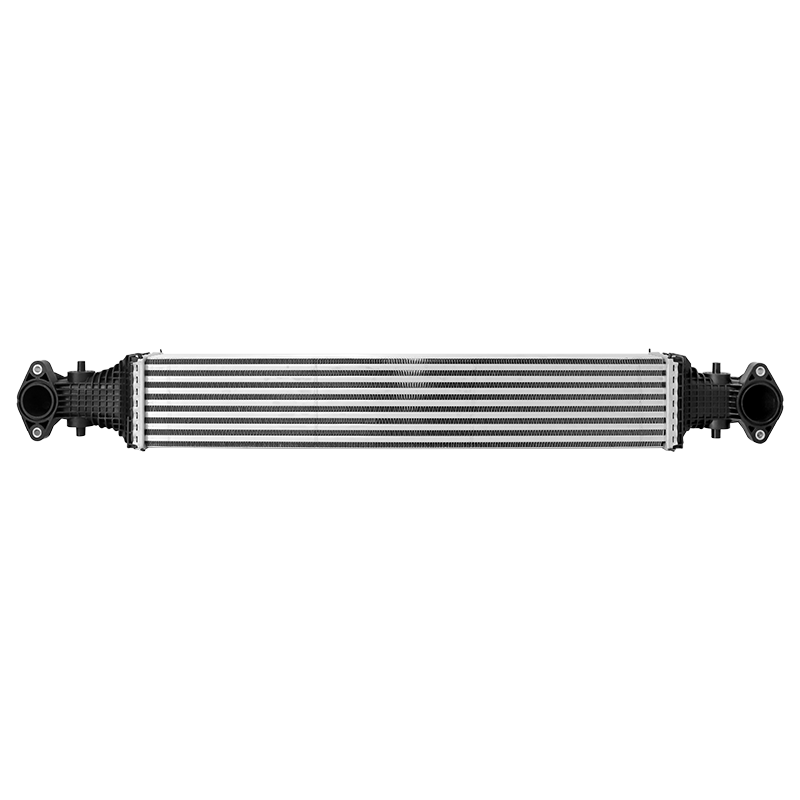2025-07-08
An HVAC auto intercooler plays a crucial role in modern automotive systems, particularly in vehicles equipped with turbocharged or supercharged engines. Though often misunderstood, the intercooler is essential for optimizing engine performance, maintaining thermal efficiency, and ensuring long-term engine reliability. In this article, we'll explore what an HVAC auto intercooler is used for, how it works, and why it's so important.
What Is an Intercooler?
An intercooler is a type of heat exchanger that cools compressed air before it enters the engine's combustion chamber. It is typically installed between the turbocharger or supercharger and the intake manifold. In the context of HVAC (Heating, Ventilation, and Air Conditioning) systems in automobiles, an intercooler helps manage the heat generated during forced induction and helps maintain optimal temperature for both performance and efficiency.
The Function of an HVAC Auto Intercooler
When air is compressed by a turbocharger or supercharger, it becomes denser and hotter. Hot air is less efficient for combustion and can lead to engine knocking, reduced performance, and potential engine damage. The intercooler’s job is to cool this hot, compressed air before it enters the engine, allowing more oxygen-rich, cooler air to combust more effectively.
Here’s a breakdown of what the intercooler helps achieve:
Enhanced Engine Performance
By lowering the temperature of the compressed air, the intercooler increases the density of the air-fuel mixture. This allows for more complete combustion, resulting in better throttle response, more power output, and improved acceleration.
Improved Fuel Efficiency
Cooler air requires less fuel to maintain optimal combustion, which translates to better mileage and reduced emissions. The HVAC system indirectly benefits from this as well, since the vehicle’s engine doesn’t have to work as hard, conserving energy used for heating and cooling systems.
Reduction of Engine Knock
High intake air temperatures can cause pre-ignition or “knock,” a potentially damaging condition. The intercooler helps prevent this by maintaining cooler intake temperatures.
Thermal Management in HVAC Systems
In some advanced vehicles, intercoolers are integrated into or closely monitored by the vehicle's HVAC control system. This helps balance cabin comfort, engine cooling, and overall thermal efficiency.
Types of Intercoolers
There are primarily two types of intercoolers used in vehicles:
Air-to-Air Intercoolers
These are the most common types. They use ambient air flowing through the grille or bumper to cool the compressed intake air as it passes through the intercooler core.
Air-to-Water Intercoolers
These use a coolant to transfer heat from the compressed air. They are more compact and effective in certain performance applications but often require a secondary cooling circuit.
HVAC and Intercooler Integration
While intercoolers are not part of the HVAC system in the traditional sense (which controls cabin temperature), they are closely tied to engine thermal management, which influences HVAC performance. For example:
Efficient Engine Cooling = Stable Cabin Temperature
A well-functioning intercooler helps maintain stable engine temperatures, which allows the vehicle’s HVAC system to operate without overcompensating for excessive engine heat.
Climate Control in High-Performance Vehicles
In vehicles with sophisticated climate control systems, sensors may monitor intercooler temperature and adjust fan speeds, valve positions, or coolant flow accordingly.
Electric and Hybrid Integration
In newer electric or hybrid vehicles, HVAC systems are more electronically controlled and sometimes integrate thermal management from both battery and engine systems. In such cases, intercooler temperature data may be used to regulate cooling loops more efficiently.
Why It Matters
The HVAC auto intercooler is essential not just for performance enthusiasts but for anyone who values engine reliability and fuel economy. By managing air temperature, it allows modern engines to run cooler, cleaner, and more efficiently. As automakers continue to push for downsized turbocharged engines to meet environmental regulations and performance expectations, intercoolers have become more advanced and critical than ever.
Common Issues and Maintenance Tips
Like all automotive components, intercoolers require some level of maintenance and care:
Leaks – Over time, intercoolers may develop leaks due to corrosion or physical damage. This leads to a loss of boost pressure and reduced performance.
Blockages – Dirt, oil, or debris can clog the intercooler core, reducing its cooling effectiveness.
Regular Inspection – Periodic checks of intercooler hoses, clamps, and the core itself help ensure everything is functioning properly.
The HVAC auto intercooler may seem like a background component, but it plays a frontline role in making today’s turbocharged vehicles powerful, efficient, and reliable. It bridges the gap between raw engine performance and temperature control, ensuring a smoother and safer driving experience. Whether you’re a daily commuter or a performance car enthusiast, understanding and appreciating the function of the intercooler is key to keeping your vehicle running at its best.
